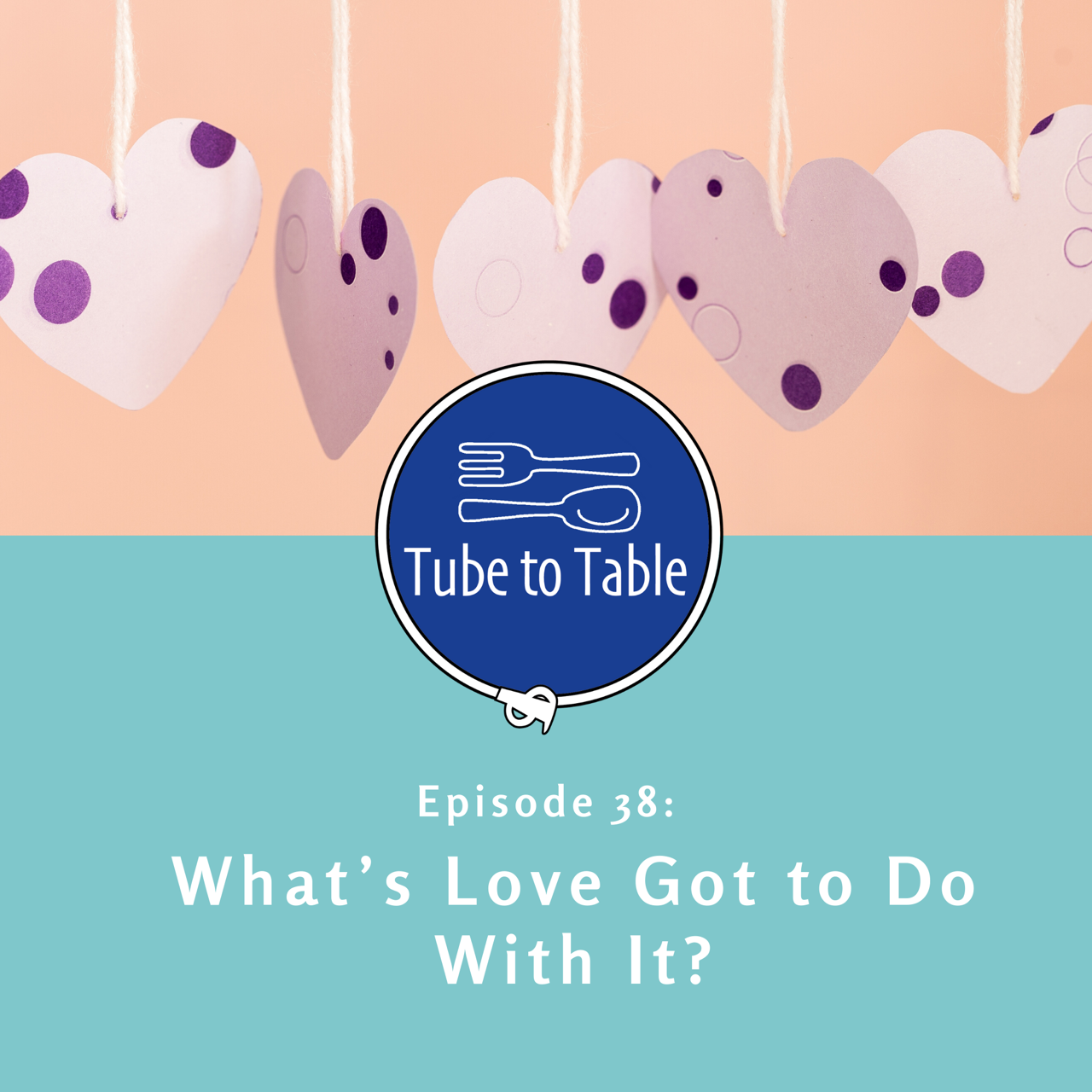Tube to Table Podcast: Episode 38: What’s Love Got to Do With It?
April 17, 2020
Posted in: Feeding, Feeding Tube Weaning, Tube To Table Podcast
Welcome back to another episode of Tube To Table! This week, Heidi and Jennifer are talking all about love and attachment. How do loving and attached relationships impact tube weaning or your child learning how to eat? If there was ever a time that we are all more aware of building these relationships, it is right now. Things can seem hard right now, but as we’re all having more video calls, calling our grandparents more, or reaching out to friends, it’s important to think about how attachment and relationships play a role in tube weaning. In previous episodes, we’ve talked a lot about building loving, trusting feeding relationships, but we have never talked about WHY that’s important. Feeding and attachment are so closely linked that it is impossible to separate out the parent/child relationship around food. When that is separated, there can be a negative long-term impact on the child. Jennifer and Heidi dive into why feeding and attachment are so important and how you can help build that attachment with your child to strengthen the feeding relationship.
You can download this episode from Itunes, Stitcher, Spotify, Google Play, or listen to it below:
What are the important elements of attachment?
If you have ever been around a newborn who hasn’t had a complex start then you know that babies learn attachment through eating. Although there are other ways, this is a primary way to learn that you trust your caregiver to meet needs, learn how to communicate to get your needs met, and learn that when you do, somebody is going to listen. If your child has a tube because they were unable to eat for a period of time or they had something happen, a big piece of attachment was removed or replaced with other things. That is okay, but it’s important to focus on how to bring that attachment back into the picture. Even if that feeding didn’t look the way you thought, now is the time to be extra cautious and do everything you can to nurture development of healthy relationships around feeding.
- Attachment leads towards the beginning of communication, self-worth, and autonomy.
- It is supported in the literature that high quality feeding interactions early in life are intricately linked to later development including cognition, language abilities, and healthy relationships.
- Sometimes this can feel “fluffy” and an extra component to therapy, but this is something that has to be the focus prior to working on the feeding.
What happens when it doesn’t happen first?
When there is an insecure attachment or something happens to erode the trust in the relationship, this can have a negative impact on growth and feeding. Unfortunately, many of the factors that we know erode a relationship happen more often for kids who have feeding tubes or feeding difficulties and it feels justified. Many parents will often say, “I know this is important, BUT I have to get them to eat!”
When you start to have those thoughts, it’s important to take a step back and look at what is important. There are therapies where this attachment and trust can be eroded. This decision to do therapy is often supported by short-term progress such as taking a certain number of bites, but research shows that when we abandon the trust and healthy relationships around food, it increases the risk of feeding challenges later. This may get you what looks like a little progress, but it is easily eroded because it does not build on a solid foundation.
How do I build the foundation first?
At Thrive, we have discussed our treatment progression pyramid, it is so crucial to spend more energy on the lower level areas of the pyramid so we can help children thrive and reach a point where they can have long-term success.
What can you look for when trying to determine what to do?
- If a child is frightened in current setting or situation or separated from parents in a way that seems scary – have a discussion about a way to change that current situation with your therapist. Advocate for your child and discuss the importance of building this attachment and relationship
- Parents should ALWAYS be in the room – children shouldn’t be learning to eat without parents present. That is the normal way children learn how to eat and there is a reason for that, to provide comfort.
- Parents often say “but he’s taking more than he took a month ago” – Yes, you will have more success short-term, but you will have long-term success if you make an effort to help your child learn to trust and build comfort around food, maintaining autonomy around their body.
- Ask yourself, “Are you getting your child to eat or is your child eating because they want to?”
Marsha Dunn Klein does a great job describing this in her “Get Permission Approach”. She is able to show parents through a visual of BOTH the parent and child leaning in to the meal, rather than the parent showing all the interest. Another awesome resource that we talk about a lot is the Ellyn Satter “Division of Responsibility”. This helps parents and therapists with the roles of the adult and child at mealtimes.
Please let us know if you need more resources if you are working to team with your therapists or medical team. We are happy to help!

Be the first to comment